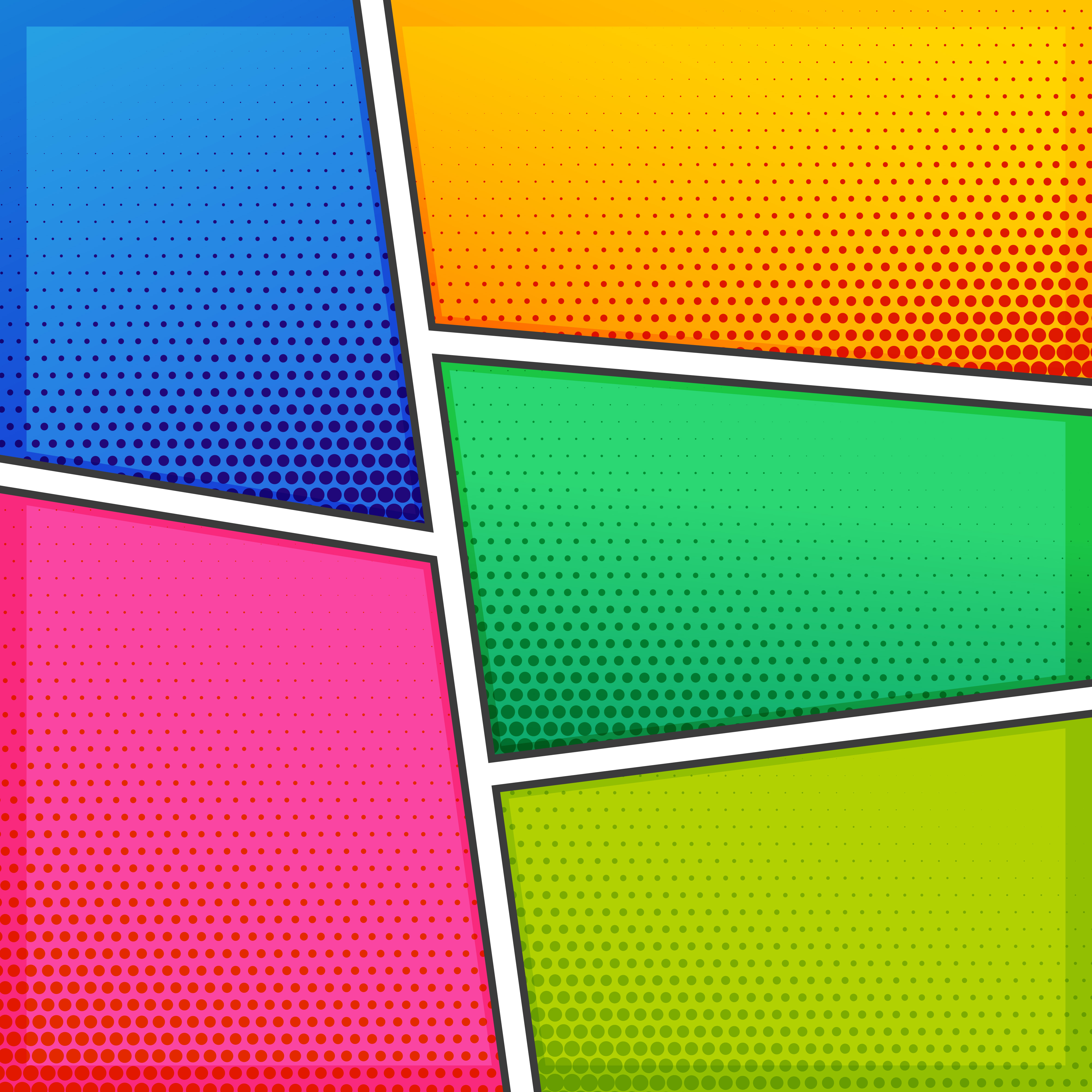Table Of Content

Start with just your first issue, and incorporate feedback from readers into the rest of your run. If there’s an unexpected fan favorite that people want to see more of, or a common critique, you can use that information to shape the rest of your series. Now you’ve got all your elements, it’s time to pull them together, and assemble your comic book. Arrange your final panels into their final flow, and give everything a final review. If the answer to any of these is no, you’ll want to go back and make revisions until you’re completely satisfied. The colors you choose for your comic book cover can pique interest as well as drawing attention to the design.
Step 2
"A Terrifying New Experiment in Pain" - Exclusive Look at Character Designs from Cullen Bunn & Jesús Hervás' New ... - Daily Dead
"A Terrifying New Experiment in Pain" - Exclusive Look at Character Designs from Cullen Bunn & Jesús Hervás' New ....
Posted: Wed, 12 Jul 2023 07:00:00 GMT [source]
The important thing is that you feel comfortable and just brainstorm ideas. When you have a character and an idea of what you want to tell, it might be tempting to just dive in and start drawing. If you take extra care planning the story and the structure of the comic, you will avoid drawing yourself into a dead end. At this point, you should have a pretty good sense of what is happening and how the story is going to progress.

Add Dialogue
When working on the layout, your goal is to keep the reader interested. One way to do this is to end each page (maybe not all, but some) with a cliffhanger. Let them know something interesting is about to happen, but don't reveal what that is until they turn the page.
Start with a storyboard
To do this, click on the “layout” button in the right hand menu. This is where you can add and delete cells, and add titles and descriptions if you would like. This will bring you to our state of the art, easy to use comic maker. Select the clipping mask with the Direct Selection Tool.
Above all, comic books are a visual medium, so try and keep dialogue short and sweet. Remember when Twitter only allowed 140 characters per Tweet? To set up the comic book cover template, you may need some graphic design skills to lay out these elements in a well-composed form. Once that's assessed, you can start putting together your thoughts for the cover design.
Now that you have your comic drawn (penciled), it's time for inking and coloring; two tasks that don't necessarily need to be done by the same person. Now we have a wavy vector path we can use as a clipping mask. From here we paste the frame border we made a copy of earlier, by pressing Command-F. This pastes the frame border on top of everything else and we have a finished panel. If I have many pages to lay out, it gives me a good overview.
MONKEY MAN Now Available On Digital HD; Eddie Yang Talks Designing Dev Patel's Badass Monkey Mask ... - CBM (Comic Book Movie)
MONKEY MAN Now Available On Digital HD; Eddie Yang Talks Designing Dev Patel's Badass Monkey Mask ....
Posted: Wed, 24 Apr 2024 01:19:38 GMT [source]
How to Choose the Right Kind of Panels
Traditional layouts often use uniform, grid-like structures, providing clarity and a steady narrative pace. Unconventional layouts with varying panel sizes and shapes can emphasize action and urgency, guiding the reader’s eye in a specific sequence and highlighting key moments in the story. Were you can create a comic and graphic novel WITHOUT drawing. Click-n-drag comic book characters, scences into panels. After you’ve assembled everything and finalized the artwork, it’s time to get publishing. We have a whole post on this, which also covers how to print and market your comic book, but here are some quick tips.
Organizing panels: The gutter
Finalizing lettering will be the final step in the process, which we’ll discuss in the next step. Services like Webtoon and Tapas host comics that are designed to be read on the phone, where the images are sequenced vertically. All the reader has to do is swipe up to see the next panel. The trim size of modern comic books is 6.625 inches x 10.25 inches (or thereabouts). Most of the shelves in a comic store are for books this size, as are the clear plastic comic protectors that collectors use. Unless you have a truly revolutionary reason for printing a 9” x 9” title, you can save yourself a lot of hassle by sticking with a standard size.
These graphic story covers are the first thing to catch a potential buyer's eye and a reader's interest. For that reason, you need to make sure the cover design is engaging and attention grabbing, portraying the heroes' brand style and voice, and overall giving a clue to the story within. Break up longer speeches into shorter balloons to maintain visual appeal and readability. Thought bubbles can be used for internal monologues, while external dialogue is typically contained within speech bubbles.
Effective comic dialogue often uses concise, punchy sentences that capture a character’s personality and mood. Slang, accents, and unique speech quirks can differentiate characters and add realism. Comic book dialogue is critical for conveying your characters’ conversations, thoughts, and narrative information. Unlike prose, comic dialogue works in tandem with visuals, meaning they must be brief and impactful. Dialog must propel the story and convey the characters’ voices without overcrowding the art.
Follow me and let's learn some necessary basics to designing a good comic cover that stands out from the rest. Also, check out CWS Bookstore, where you can sell digital and printed versions of your comics without worrying about printing and order fulfillment. Contact Comix Well Spring to find out more about our services and for resources on how to create a comic book. Sometimes, what’s unsaid can be as powerful as spoken words, allowing the artwork to carry the narrative. Creating a profile for each person is an excellent way to start building your characters.
When selecting your color palette, make sure it reflects the mood you want to create. Creative lettering can also be used to represent different characters’ voices. Unique fonts or colors for certain characters can help readers instantly recognize who is speaking, adding to character development. In Saga by Brian K. Vaughan and Fiona Staples, the characteristic fonts and speech bubble designs for different species underline the diversity of its universe.
Monthly payment plan at adobe.com makes sure you always have the latest version. Luckily, social media sites like Facebook and Twitter make this relatively easy. Your best best is to create a daily post telling everyone about your new venture. Just don't be a pest; don't flood their feed with your sales pitch. In addition to proper color selection, not keeping your colours consistent can break things too.
Panel layout in comic books is a critical element that dictates the flow and rhythm of the narrative. The arrangement and size of panels on a page, along with the space between them, known as gutters, influence the pacing and focus of the story. Using sound effects throughout your comic helps emphasize events, actions, and sounds happening within the scene. They are a powerful element that can help your reader visualize, feel, or hear what's happening in the comic book, making it more realistic. As much as the old saying suggests otherwise, people really do judge a book by its cover — and especially a comic book.
Comic book design is an adventure in storytelling and artistic expression. At its core, this creative process combines various elements of a comic book, including panels, dialogue, colors, and lettering, to create a captivating narrative. Once you have a winner, choose a title font to fit your comic book. Just as the title and cover image need to work together to create the same mood, the cover font should match the interior font style. Keep the lettering style simple and legible, and avoid adding too many colors, special effects, or shadowing, which can be distracting. Creating a comic book usually happens from the inside out, making cover design the last step of the process.

No comments:
Post a Comment